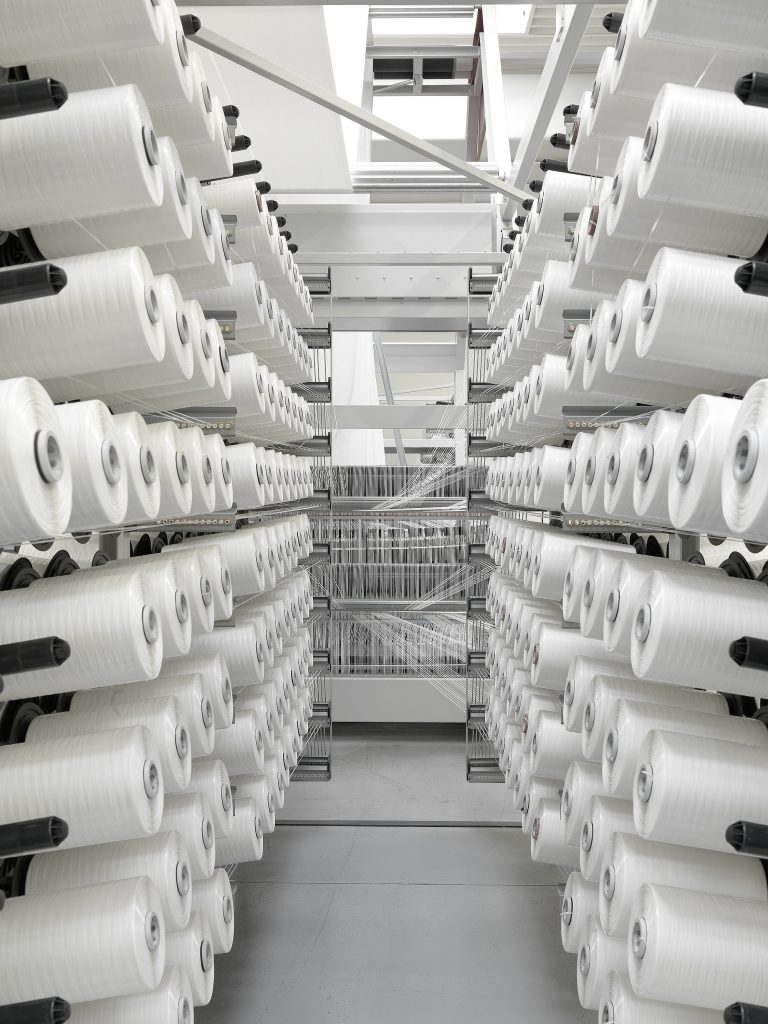
Ray, CEO of VidePak, leans forward during a strategy meeting:
“Our FFS roll bags aren’t just packaging—they’re engineered solutions. Durability and flexibility start at the molecular level, driven by precision in extrusion, drawing, and weaving. If we master these processes, we dominate the market.”
This statement encapsulates VidePak’s philosophy. Since 2008, the company has leveraged 30+ years of industry expertise and advanced Starlinger machinery to produce over 100 million high-performance Form-Fill-Seal (FFS) roll bags annually. With a global footprint and $80M in annual revenue, VidePak’s success hinges on its ability to standardize quality while addressing critical production variables. Below, we dissect how extrusion, drawing, and weaving define the durability and flexibility of FFS roll bags—and how VidePak optimizes these processes to meet global demand.
1. The Science of Durability: Extrusion, Drawing, and Weaving
1.1 Extrusion: Precision in Polymer Structuring
Extrusion transforms raw polypropylene (PP) granules into flat tapes (flat yarns) through controlled heating and molding. VidePak’s 16 extrusion lines, powered by Starlinger technology, ensure uniform melt flow and cooling rates.
- Impact on Durability:
- Excessive stretching during extrusion weakens molecular bonds, reducing tensile strength by up to 30%. VidePak’s proprietary cooling systems maintain a tensile strength of ≥45 N/mm², exceeding industry benchmarks.
- Additives like calcium carbonate (5–10% by weight) enhance rigidity while reducing material costs. However, overfilling (>15%) risks brittleness, a pitfall VidePak avoids through real-time viscosity monitoring.
Example: A competitor’s PP bags failed during transcontinental shipping due to inconsistent extrusion thickness. VidePak’s laser-guided thickness sensors (±0.01mm accuracy) prevent such defects, ensuring load-bearing capacities of up to 50 kg.
1.2 Drawing: Balancing Tension and Elasticity
Drawing stretches extruded tapes into fine, uniform flat yarns. VidePak’s automated tension control systems adjust draw ratios (5:1 to 7:1) based on yarn thickness.
- Impact on Flexibility:
- Overstretching reduces elongation-at-break (critical for absorbing impact), while understretching creates uneven surfaces prone to abrasion. VidePak’s yarns achieve an optimal balance: 15–20% elongation and ≤2% thickness variation.
- Case Study: A fertilizer client reported 0.3% bag ruptures with VidePak’s bags vs. 2.1% with a rival’s—attributed to VidePak’s tension-calibrated drawing process.
1.3 Weaving: Interlocking Strength and Flexibility
Using 100+ circular looms, VidePak weaves flat yarns into fabric with customizable densities (10×10 to 14×14 threads/cm²).
- Durability Metrics:
- Higher weave density improves puncture resistance but reduces flexibility. For cement packaging (high abrasion), VidePak uses 14×14 weaves; for lightweight pet food, 10×10 weaves enhance suppleness.
- Data Point: Third-party tests show VidePak’s woven fabric withstands 500+ MIT flex cycles (vs. 300 cycles for industry averages).
2. Quality Control: From Raw Material to Final Product
VidePak’s QA framework integrates ISO 9001 standards and AI-driven defect detection:
| Parameter | VidePak Standard | Industry Average |
|---|---|---|
| PP Purity | 99.9% Virgin Polymer | 95–98% Recycled Blends |
| Yarn Thickness Tolerance | ±0.02mm | ±0.05mm |
| Bag Seam Strength | ≥300 N/cm | 200–250 N/cm |
FAQs:
Q: How does VidePak ensure color consistency in multi-color printing?
A: Our 30+ printing machines use spectrophotometric feedback to adjust ink ratios dynamically, achieving ΔE ≤1.5 (nearly imperceptible variation).
Q: Can FFS roll bags handle hygroscopic materials like fertilizers?
A: Yes. Our laminated PE liners (optional) provide moisture barriers with ≤0.5g/m²/24hr vapor transmission rates.
3. Case Study: Optimizing for Agricultural Packaging
A U.S.-based agrochemical supplier required bags resistant to UV degradation and chemical exposure. VidePak’s solution:
- Extrusion: Added UV stabilizers (0.5% HALS) to PP.
- Weaving: 12×12 weave density for tear resistance.
- Lamination: BOPP coating for chemical inertness.
Result: 18-month outdoor storage viability (vs. 12 months for competitors).
4. Future Trends: Sustainability and Automation
VidePak’s R&D pipeline includes:
- Bio-based PP Blends: Partnering with [Sustainable Packaging Coalition] to reduce carbon footprints.
- AI-Powered Looms: Predictive maintenance cuts downtime by 20% (piloted in Q1 2025).
For insights into FFS technology and automated packaging solutions, explore our partners’ innovations in Form-Fill-Seal Woven Bags: The Future of Automated Packaging and FFS Roll Bags: Optimal Solutions for Building Materials.
5. Conclusion
VidePak’s dominance in FFS roll bags stems from a trifecta: material science mastery, process precision, and relentless standardization. By controlling extrusion’s molecular alignment, drawing’s tensile balance, and weaving’s structural integrity, the company delivers packaging that’s as durable as it is adaptable—proving that quality isn’t an accident but a calculated outcome.
*This report synthesizes data from industry whitepapers, third-party lab tests, and VidePak’s internal production logs. For further details on polymer science or machinery specifications, refer to *Advanced Polypropylene Processing* (2024) and Starlinger Technical Manuals.*